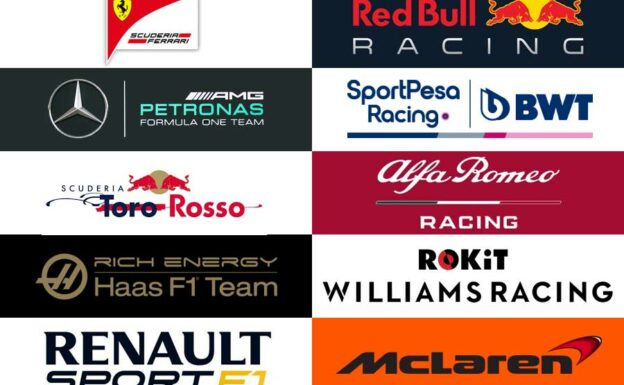How do F1 teams earn money year after year?

Formula 1 is definitely a complex sport regarding money and how the companies involved generate revenue due to their respective performances each season. Would you need an F1 betting guide in the hypothetical case of betting on what team is going to receive more money after the 2019 season? After learning about it here, you will be fully capable of betting carefully thanks to a better understanding of the system.
Betting on the World Drivers’ Championship and the World Constructors’ title is very straightforward. However, other areas can be difficult to analyse. In the hypothetical matter of the team which earns the biggest amount of money, the odds would not always favour the best squad on paper, here you will see why.
Heading into 2019, Mercedes was the odds-on favourite to win the Constructors’ title, according to the odds makers. Now that the season is over and they won the championship, does that make them favourites to be rewarded with the most money after this season? I bet that, after reading these lines, you will see it is not that simple.
Since the seventh Concorde Agreement was introduced, we have seen some brands have really bad performances during the year, like McLaren in 2015, but still, they received more money than other teams which performed better in said campaign.
These weird situations, of course, have an explanation. The Concorde Agreement established in 2013 is setting the standard in how the teams produce their yearly money and its method is not really basic.
At the end of every campaign, Formula 1 generates an impactful pot which is distributed between F1’s commercial rights holder (Liberty Media currently) and the teams. The pot is conformed primarily due to the fees paid by race promoters, the broadcasting fees and money coming from sponsorship.
Regarding the team's prize money, the format consists of two columns plus other special bonuses for the big teams which will vary depending on each brand separate deals. We will divide the first part into Column A and Column B for order purposes. Column A and Column B each represent close to 35% of the pot destined to be perceived by the teams.
In Column A, teams which classified in the top ten in two of the past three seasons will receive an equal quantity of money. Currently, each current team would be classified to receive said payment since F1 newest team, Racing Point, will be classified in the top ten both in 2018 and 2019.

(L to R): Christian Horner (Red Bull), Mattia Binotto (Ferrari), Toto Wolff (Mercedes), Cyril Abiteboul (Renault)
Then, Column B will establish each team earnings regarding their positions in the last Formula One World Constructors’ Championship. In Column B, the highest-ranked team will receive around 6% of the total money received by the brands (including the bonuses) and each team’s earnings will be set according to their position in the previous WCC with a sliding scale system. The Constructors' champion will earn the most in this section (19% of the money distributed in Column B), while the last-placed team will receive the least (4%). Very straightforward.
After the pot is shared in Column A and Column B including sporting results, here is where the road gets trickier. There are many different bonuses which some of the bigger teams have agreed with Formula One Management due to their historical success or for simply keeping their spot as Formula 1 teams for a long time.
Ferrari, of course, is the only team which has competed in each Formula 1 season and the most successful in terms of quantity. The Scuderia receives a Long-Standing Team bonus (around 7% of the full pot) each year since 2013, which normally makes the Italian giants the highest-earning team of the paddock of the pinnacle of motorsport.
Also, there is another bonus called the CCB, the Constructor’s Championship Bonus, which is about 15% of the full pot and is distributed to Ferrari, Mercedes, Red Bull, and McLaren. Williams, another historical team in the top echelon of racing, receives a heritage bonus of $10 million.
On the other hand, Red Bull receives another special bonus of $35 million for being the first brand to sign the current Concorde Agreement back in 2013. Mercedes, again due to their success, earns a $35 million for achieving at least two World Championships since the instalment of the current agreement. These bonuses were believed to be a one-off for the big teams in the early years of the agreement but, year after year, leaked details of the payment for the teams have included these figures.
Of course, this type of money sharing is expected to survive just for another season, as it runs out at the end of the 2020 campaign. From 2021 on, teams should earn money in a very different manner and, maybe, an equitable way which really rewards squads for their present performances. What surprises you the most about how this Formula 1 prize money system works?
✅ Check out more posts with related topics:














LAST 3 F1 Fan COMMENTS